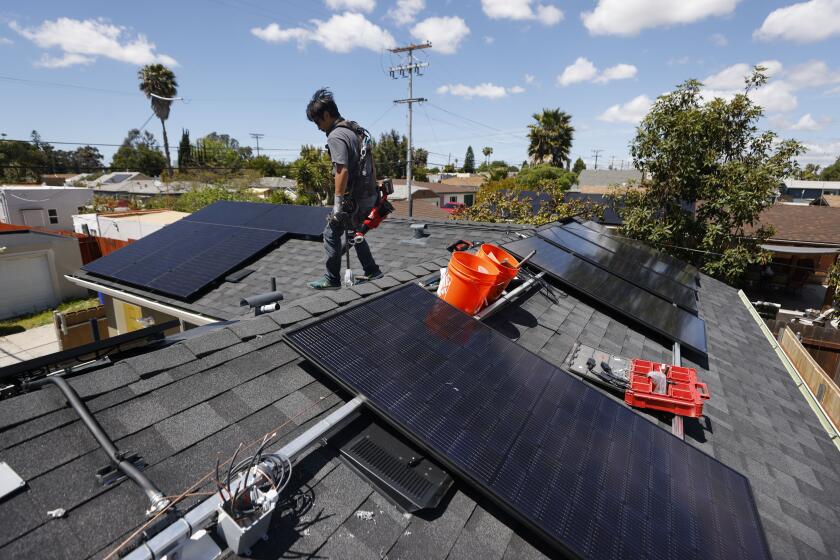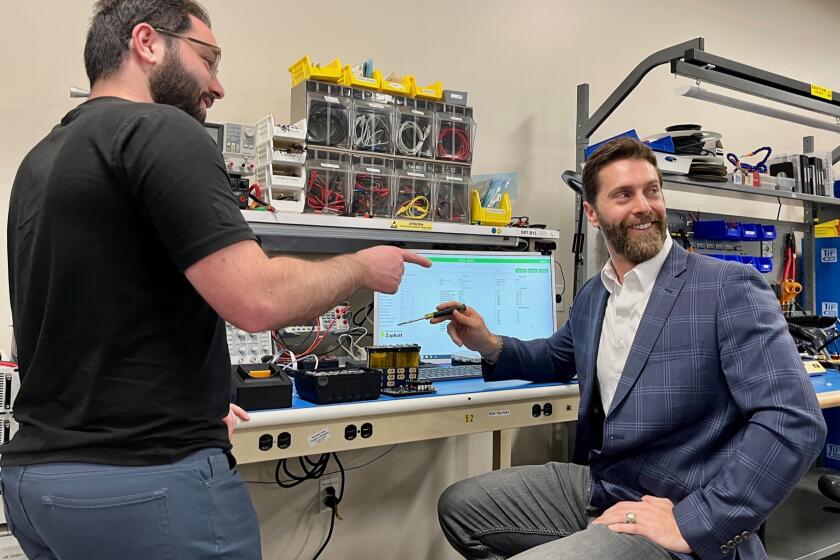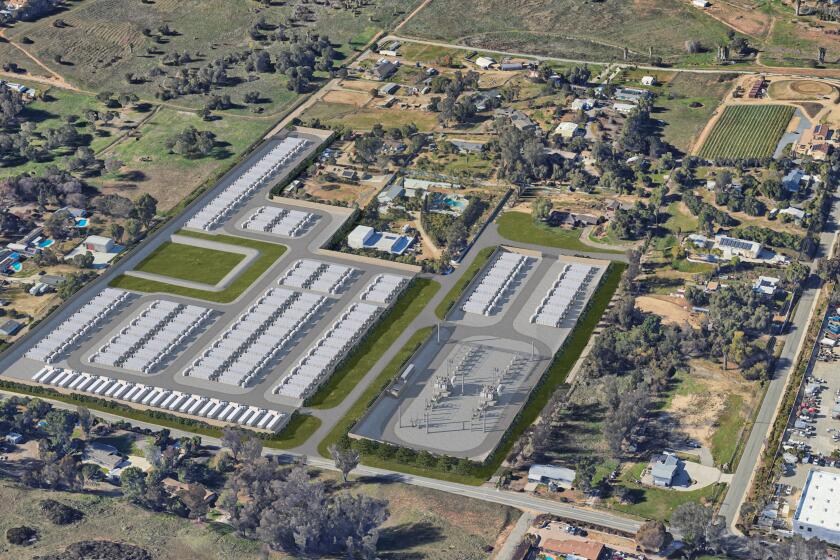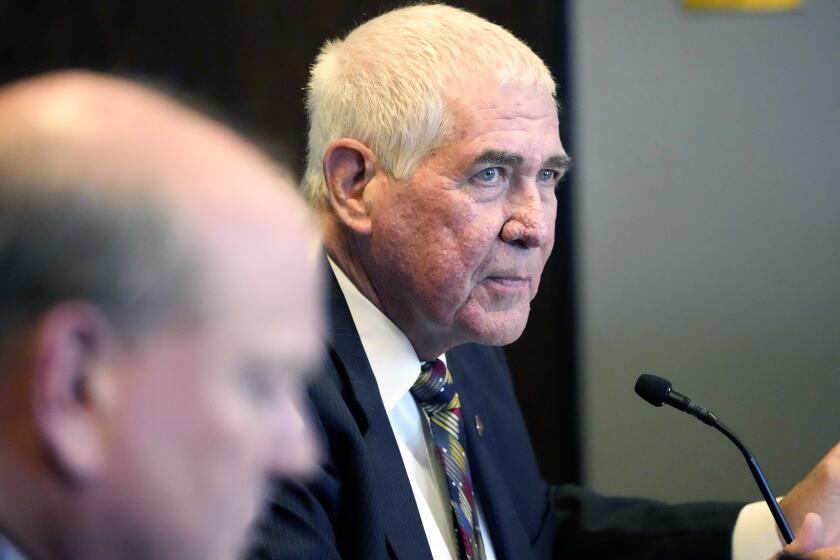San Diego launches pilot program to charge the city’s fleet of electric vehicles

6-month program looks to save city money on fueling costs
The city of San Diego is spending $155,000 on a pilot project with a local company that will use an innovative design to charge the city’s growing fleet of electric vehicles with the expectation that the program will put a dent in the city’s $6 million annual fuel bill.
A pair of Electric Vehicle Autonomous Renewable Chargers, or EV ARCs, have been placed in the City Operations Yard near downtown, each with the ability to charge up to five vehicles at a time, day and night.
For the record:
5:10 p.m. April 22, 2021This story has been updated to show the EV ARC solar panel is 4.3 kilowatts.
The $155,000 is “a little bit of an upfront investment but slowly but surely, we’ll be able to pay back the cost of these with fuel savings,” said Colin Santulli, program manager for the city of San Diego’s Department of Sustainability. “Eventually, these will pay for themselves.”
At first glance, the EV ARC looks like any other charging station for an electric or plug-in car.
But each unit is comprised of a dedicated 4.3-kilowatt solar panel overhead that generates its own electricity, an energy storage unit and a 1-inch ballast pad on the ground that fits into a standard 9-feet-by-8-feet parking space. Five charging ports are found at the top of the pad that can charge any EV model.
Made by Beam Global out of Miramar, the EV ARCs operate independently of the electric grid.
Each EV ARC weighs about 10,000 pounds but the units are transportable. They do not require the expense of digging trenches to run power to the unit so they do not need special permitting.
“From a taxpayer’s point of view, they’re not paying for the disruption of the construction, they’re not paying for the energy costs moving into the future,” said Beam Global CEO Desmond Wheatley. “And in every instance where we’re deployed across the world, it was far less expensive to do this solution.”
The pilot program will run for six months and then city officials will evaluate its effectiveness and determine if it wants to purchase more EV ARCs. Santulli said the expected payback period will be about five to six years.
“To find a project like this where you don’t have to do construction, trenching and all of that, and you can use the sun as a way to produce electricity is a great idea for me,” said San Diego City Councilwoman Marni von Wilpert, who is also chair of the city’s Active Transportation and Infrastructure Committee.
The city’s fleet has 450 low- or zero-emission vehicles, including 20 EVs, with three more coming in the next few weeks, Fleet Operations Director Casey Smith said. The San Diego Police Department has 289 hybrid vehicles, with 100 more on order.
Under the city’s Climate Action Plan, a target has been set to increase zero-emission vehicles in the municipal fleet by 90 percent of gasoline-powered vehicles by 2035. Overall, the city looks to cut greenhouse gas emissions in half by 2035.
“We spend a lot of money on fuel,” Mayor Todd Gloria said. “We need to make this transition. We’ve committed to this transition. Energizing our municipal fleet is one of our strategies in our Climate Action Plan so we must do this.”
Gloria noted the “elegant design” of the EV ARC and said the pilot program “fits well and it’s a happy coincidence that this is a San Diego company.”
Originally called Envision Solar International, Beam Global has been in business for more than a decade and turned in $6.2 million in gross sales last year, Wheatley said. The company employs a staff of about 40 at its headquarters in Miramar, where EV ARCs and other transportation electrification infrastructure are manufactured at a 52,000 square-foot facility.
Wheatley said the units can be found in about 100 municipalities in the U.S., including New York City and Oakland. The solar panel is guaranteed to withstand wind speeds of up to 120 mph. The unit’s energy storage device allows it to deploy charging power when the sun is not shining.
“We bring them in on a special hydraulic transportation unit,” Wheatley said. “A single individual brings it in, uses the hydraulics, lowers it down onto the ground, drives away, it’s ready to operate.”
Get U-T Business in your inbox on Mondays
Get ready for your week with the week’s top business stories from San Diego and California, in your inbox Monday mornings.
You may occasionally receive promotional content from the San Diego Union-Tribune.











